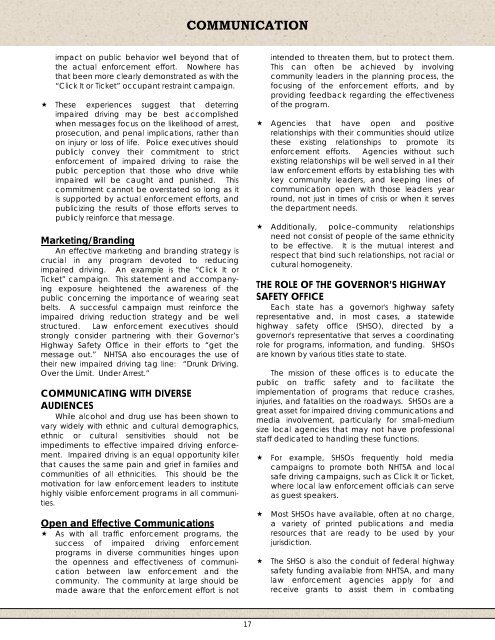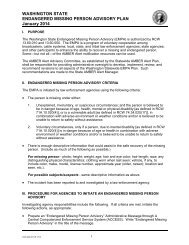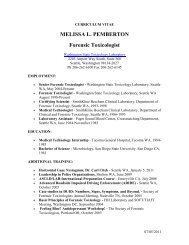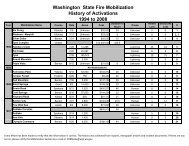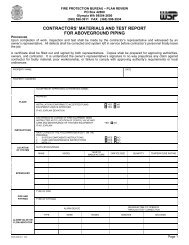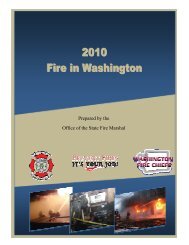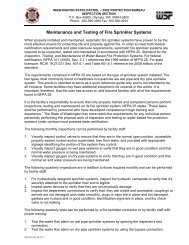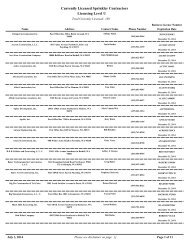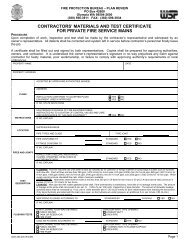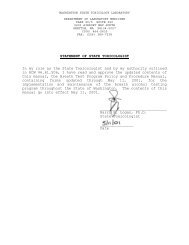Impaired Driving Subcommittee Impaired Driving Guidebook - NHTSA
Impaired Driving Subcommittee Impaired Driving Guidebook - NHTSA
Impaired Driving Subcommittee Impaired Driving Guidebook - NHTSA
You also want an ePaper? Increase the reach of your titles
YUMPU automatically turns print PDFs into web optimized ePapers that Google loves.
COMMUNICATIONimpact on public behavior well beyond that ofthe actual enforcement effort. Nowhere hasthat been more clearly demonstrated as with the“Click It or Ticket” occupant restraint campaign. These experiences suggest that deterringimpaired driving may be best accomplishedwhen messages focus on the likelihood of arrest,prosecution, and penal implications, rather thanon injury or loss of life. Police executives shouldpublicly convey their commitment to strictenforcement of impaired driving to raise thepublic perception that those who drive whileimpaired will be caught and punished. Thiscommitment cannot be overstated so long as itis supported by actual enforcement efforts, andpublicizing the results of those efforts serves topublicly reinforce that message.Marketing/BrandingAn effective marketing and branding strategy iscrucial in any program devoted to reducingimpaired driving. An example is the “Click It orTicket” campaign. This statement and accompanyingexposure heightened the awareness of thepublic concerning the importance of wearing seatbelts. A successful campaign must reinforce theimpaired driving reduction strategy and be wellstructured. Law enforcement executives shouldstrongly consider partnering with their Governor’sHighway Safety Office in their efforts to “get themessage out.” <strong>NHTSA</strong> also encourages the use oftheir new impaired driving tag line: “Drunk <strong>Driving</strong>.Over the Limit. Under Arrest.”COMMUNICATING WITH DIVERSEAUDIENCESWhile alcohol and drug use has been shown tovary widely with ethnic and cultural demographics,ethnic or cultural sensitivities should not beimpediments to effective impaired driving enforcement.<strong>Impaired</strong> driving is an equal opportunity killerthat causes the same pain and grief in families andcommunities of all ethnicities. This should be themotivation for law enforcement leaders to institutehighly visible enforcement programs in all communities.Open and Effective Communications As with all traffic enforcement programs, thesuccess of impaired driving enforcementprograms in diverse communities hinges uponthe openness and effectiveness of communicationbetween law enforcement and thecommunity. The community at large should bemade aware that the enforcement effort is notintended to threaten them, but to protect them.This can often be achieved by involvingcommunity leaders in the planning process, thefocusing of the enforcement efforts, and byproviding feedback regarding the effectivenessof the program. Agencies that have open and positiverelationships with their communities should utilizethese existing relationships to promote itsenforcement efforts. Agencies without suchexisting relationships will be well served in all theirlaw enforcement efforts by establishing ties withkey community leaders, and keeping lines ofcommunication open with those leaders yearround, not just in times of crisis or when it servesthe department needs. Additionally, police–community relationshipsneed not consist of people of the same ethnicityto be effective. It is the mutual interest andrespect that bind such relationships, not racial orcultural homogeneity.THE ROLE OF THE GOVERNOR’S HIGHWAYSAFETY OFFICEEach state has a governor's highway safetyrepresentative and, in most cases, a statewidehighway safety office (SHSO), directed by agovernor's representative that serves a coordinatingrole for programs, information, and funding. SHSOsare known by various titles state to state.The mission of these offices is to educate thepublic on traffic safety and to facilitate theimplementation of programs that reduce crashes,injuries, and fatalities on the roadways. SHSOs are agreat asset for impaired driving communications andmedia involvement, particularly for small-mediumsize local agencies that may not have professionalstaff dedicated to handling these functions. For example, SHSOs frequently hold mediacampaigns to promote both <strong>NHTSA</strong> and localsafe driving campaigns, such as Click It or Ticket,where local law enforcement officials can serveas guest speakers. Most SHSOs have available, often at no charge,a variety of printed publications and mediaresources that are ready to be used by yourjurisdiction. The SHSO is also the conduit of federal highwaysafety funding available from <strong>NHTSA</strong>, and manylaw enforcement agencies apply for andreceive grants to assist them in combating17


